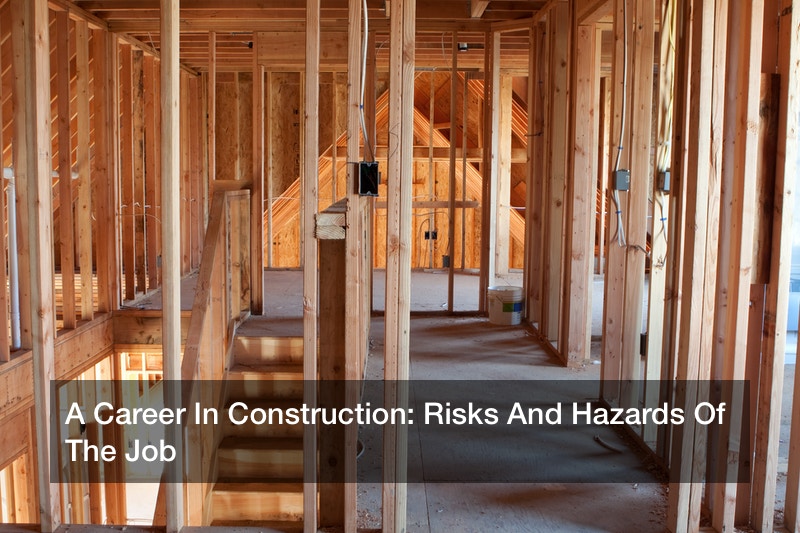A Career In Construction: Risks And Hazards Of The Job


 The U.S. is an industrial nation. As of 2016, over 426,000 people were employed by the construction equipment operation industry, and around 10.6 million people worked in the construction sector overall. Although the field offers job security and a modest living wage, it has its drawbacks — namely, the hazards and risks involved with such dangerous work. Let’s take a look at just how these conditions can impact worker health.
The U.S. is an industrial nation. As of 2016, over 426,000 people were employed by the construction equipment operation industry, and around 10.6 million people worked in the construction sector overall. Although the field offers job security and a modest living wage, it has its drawbacks — namely, the hazards and risks involved with such dangerous work. Let’s take a look at just how these conditions can impact worker health.
The Fatal Four
Approximately one in five worker deaths in 2017 were in construction, making the industry one of the deadliest in the United States. The top four causes of these deaths — aptly named the “Fatal Four” — are as follows.
- Falls
- Struck-By-Object
- Electrocutions
- Caught-In/Between (which includes construction workers killed when caught-in or compressed by equipment or objects, and struck, caught, or crushed in collapsing structure, equipment, or material)
In the construction industry, falls are the number one cause of death. The prevention of falls involves the use of personal fall arrest (safety) equipment first and foremost, as well as the constant maintenance of perimeter protection; covered, secured, and labeled floor openings; and the safe use of ladders and scaffolds. Preventing struck-by events is more basic, and simply involves situational awareness and the wearing of high-visibility clothing near equipment and vehicles.
Electrocution can be safeguarded against by locating and identifying utilities before beginning work; looking for overhead power lines when operating equipment; understanding and obeying the safe distance requirements in regards to power lines; and being alert to electrical hazards when working with various platforms. Finally, caught-in/betweens can be protected against by keeping clear of open trenches or excavations that are five feet or deeper if there are no protective systems in place, and ensuring that the trench or excavation has sloping, shoring, benching, or trench shield systems. It is estimated that eliminating the Fatal Four would save 582 workers’ lives in the U.S. every year.
Chemical
Not all construction site hazards are physical. When dealing with toxic or caustic chemicals — which many industrial sites do –, there are additional risks workers must be aware of. For example, Reaction Injection Molding (RIM) is the process by which molded polyurethane parts are made. In the process, two liquid components are mixed and injected into the mold where they chemically react and cure. The high heats required to cause such a reaction emits harmful smoke and fumes that can enter the operator’s breathing zone; if that happens, the soft tissues of the head (such as the eyes, nose, and throat) can become seriously irritated and even burned. Respiratory issues may develop if exposure is severe enough, and — since many of these products are carcinogens — may even result in cancer. Occupational lung diseases are the number one occupation-related illness in the U.S., after all. Consequently, face and breathing protection is vital to staying healthy and safe.
Facing The Fallout
Unfortunately, accidents happen and people ignore safety requirements. The ramifications of either fall on a spectrum ranging from minor injury to death. There are around two million new wheelchair users in the U.S. every year; obviously, not all of these are attributed to construction site accidents, but chronic pain and mobility issues are a very common result of workplace injuries.
Of course, that’s only if you’re helped immediately; if you suffer a fall or injury when no one is around, your chances are much worse. In fact, if someone experiences an accident that stops their heart and a bystander does not perform CPR, their survival chances decrease 7% in every single minute of delay.
The best way to keep yourself and your coworkers safe is to follow the safety mandates in place and educate yourself on proper first aid care. If you’re able to do that, your odds of enduring a workplace injury (or worse) are significantly reduced.